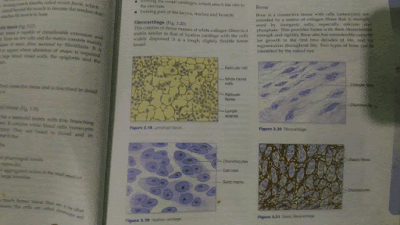Basic Anatomy and Physiology Nursing Questions and Answers
Community Health Nursing; Click here
Please Subscribe with your google account to get regular email updates in your Inbox
Total Quiz Questions=25
Mark/Question= 5
Total Marks=125
Most important questions and answers of basic anatomy and physiology. In this quiz nursing questions regarding cells, tissue and organization of the body included. These questions are asked in various government exams includes AIIMS Bhopal, PGIMER, RAKCON, JIPMER etc.
-
- Every cell in the human body has a nucleus with the exception of?
a) Epithelial cells
b) Nerve cells
c) Muscle cells
d) Mature erythrocytes
-
- The proteins that act as catalysts for biochemical reactions in the human body known as?
a) Hormones
b) Enzymes
c) Acids
d) Cytoplasm
-
- The movement of a chemical substance from an area of high concentration to an area of low concentration, and occurs mainly in gases, liquids and in solutions?
a) Active transport
b) Dialysis
c) Diffusion
d) Osmosis
-
- The extracellular fluids consists the following except?
a) Blood
b) Fluids inside the cells
c) Plasma
d) CSF
-
- A form of active transport and bulk transport in which a cell transports molecules out of the cell by expelling them is known as?
a) Pinocytosis
b) Phagocytosis
c) Exocytosis
d) Osmosis
-
- Which among the following is not a function of epithelial tissue?
a) Protection
b) Structural support
c) Secretion
d) Absorption
-
- Which type of simple epithelial tissue mainly involved in secretion, excretion, and absorption?
a) Squamous cell epithelium
b) Cuboidal epithelium
c) Columnar epithelium
d) Transitional epithelium
-
- Which of the following epithelium is composed of several layers of pear-shaped cells and is found lining of urinary bladder?
a) Squamous cell epithelium
b) Cuboidal epithelium
c) Columnar epithelium
d) Transitional epithelium
-
- The lymphoid tissues are found in following areas except?
a) Lymph nodes
b) Heart
c) Spleen
d) Palatine and tonsils
-
- The cell membrane of the muscle fibre is known as?
a) Endomysium
b) Myofibrils
c) Sarcoplasm
d) Sarcolemma
-
- The smallest functional unit of skeletal muscle fibre is?
a) Sarcomere
b) Muscle fibre
c) Myofibril
d) Sarcolemma
-
- Which group of muscles known as voluntary muscle or its contraction is under conscious control?
a) Skeletal muscle
b) Smooth muscle
c) Non-striated muscle
d) Cardiac muscle
-
- Labile cells are those in which replication is normally a continuous process, they include all of the following except?
a) Epithelium of mucous membrane
b) Nerve cells
c) Bone marrow
d) Blood
-
- The serous membranes double layered loose areolar connective tissues mainly it covers the following three cavities except?
a) Thoracic cavity
b) Cranial cavity
c) Pericardial cavity
d) Abdominal cavity
-
- The anatomical term used to describe the nearer to a point of attachment of limb, or origin of a body part?
a) Medial
b) Dorsal
c) Proximal
d) Distal
-
- The term used to describe a smooth rounded projection of bone that forms part of a joint?
a) Bony sinus
b) Condyle
c) Septum
d) Facet
-
- The first cervical vertebra is known as?
a) Coccyx
b) Atlas
c) Axis
d) Sacrum
-
- The largest cavity of human body is?
a) Cranial cavity
b) Thoracic cavity
c) Abdominal cavity
d) Pelvic cavity
-
- Which of the following is not an example of chemical carcinogen?
a) Aniline dyes
b) Arsenic compounds
c) Asbestos
d) Lipoic acid
-
- The condition in which severe weight loss accompanied by progressive weakness, loss of appetite, wasting and anemia that is usually associated with advanced cancer is known as?
a) Anorexia
b) Cachexia
c) Metastasis
d) Extreme weakness
-
- Which of the following is the primary stimulus of the increased erythropoiesis in bone marrow?
a) Anemia
b) Iron deficiency
c) Hypoxia
d) Hyperventilation
-
- People with which blood group has neither anti-A or anti-B antibodies in their blood?
a) A Group
b) B group
c) AB group
d) O group
-
- Which is the largest mononuclear cells that originate in red bone marrow?
a) White blood cell
b) Platelet
c) Monocytes
d) Basophils
-
- The example of reticuloendothelial cells in the glomerulus of nephrons in the kidney is?
a) Histiocytes
b) Microglia
c) Kupffer cells
d) Mesangial cells
-
- The following steps are involved in hemostasis of blood vessels except?
a) Vasodilatation
b) Platelet plug formation
c) Blood clotting
d) Fibrinolysis
After scoring on the next page, click “Give Me More”, we have recommendations for you!
Thank You, Please Subscribe for All Upcoming Questions Series or You can Comment below your Email address get all updates in your mail inbox
